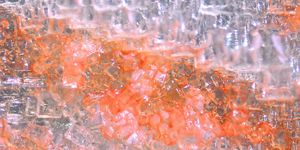3D Printed Fractal Design Boosts Solar Efficiency
Solar power is a renewable energy source that is being widely implemented worldwide – it was the fastest-growing source of new energy in 2016, when renewables made up two-thirds of new power added to grids around the Earth. While many solar plants use photovoltaic solar panels, some facilities are of the concentrating solar power variety (CSP). These CSP plants rely on specialized mirrors and solar receivers to produce energy and they can get a 20 percent efficiency boost from an innovative 3D printed design based on fractals.
Fractals are a nature-inspired concept in which a pattern is repeated at increasingly smaller scales. Fractal patterns are also known as evolving symmetry, and their shapes have given rise to the new 3D printed high-efficiency solar receiver design from the engineers at the U.S. Department of Energy (DOE)’s Sandia National Laboratories in DC.
CSP facilities use big groups of mirrors called heliostats to reflect sunshine onto receivers, which in turn heat fluids that are piped through the receiver panels. This process produces steam that drives a turbine and creates energy. According to the DOE, one CSP plant can generate sufficient power for about 90,000 households. They are often built in the sunny Southwest U.S. Typically, the CSP receivers consist of tubes arranged in cubicle or cylindrical patterns that cannot capture all of the light they receive; some of it reflects away.
"On a flat receiver design, 5 percent or more of the concentrated sunlight reflects away. So, we configured the panels of tubes in a radial or louvered pattern that traps the light at different scales. We wanted the light to reflect, and then reflect again toward the interior of the receiver and get absorbed, sort of like the walls of a sound-proof room," Sandia Mechanical Engineer Cliff Ho, explains. The Sandia engineers designed and arranged panels so that light bouncing off one panel would be absorbed by another over and over, concentrating the solar power. This allowed them to create receivers that are 20 percent more efficient than other contemporary CSP models.
The use of 3D printing was essential to the team’s success in producing more efficient and inexpensive receivers. During 3D printing, a computer guides the accumulation and solidification of materials during the creation of an object, and it can produce practically any type of 3D form. Using 3D printing allowed the researchers to test multiple fractal design prototypes at small scales. A nickel alloy called Inconel 718 that is able to withstand the high pressures and temperatures of solar power receivers was used to create the new tube components. Ho believes this was the first use of 3D printing, also known as additive manufacturing, for the creation of prototype solar receivers “with novel shapes and features” for CSPs.
Sandia’s team is focusing on creating these efficient devices for small to medium CSP plants in areas with high levels of sunlight but lower levels of economic development, such as India, Solar Novus reports.
This CSP development initiative is being carried out as part of the Solar Energy Research Institute for India and the United States (SERIIUS), which is a five-year project sponsored by the Indian government and DOE. The program is co-led by the National Renewable Energy Laboratory and the Indian Institute of Science.
To learn more about how traditional CSP plants, work, check out the DOE video below.









